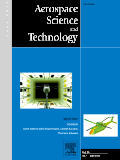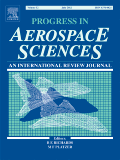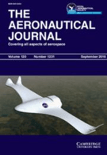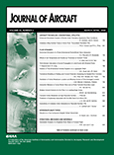
Advances in Aircraft and Spacecraft Science
Scope & Guideline
Advancing Technologies that Propel Aviation and Spacecraft
Introduction
Aims and Scopes
- Aerodynamics and Fluid Dynamics:
Research focusing on the behavior of air and other fluids in relation to aircraft and spacecraft, including aerodynamic coefficients, shock waves, and turbulence models. - Structural Analysis and Materials:
Investigations into the structural integrity and material properties of aircraft and spacecraft components, including composite materials, vibration analysis, and thermal effects. - Control Systems and Dynamics:
Studies on the control mechanisms and dynamic behavior of aerospace systems, including aeroelastic stability, vibration control, and intelligent control methodologies. - Thermal Management and Heat Transfer:
Research on thermal management systems, heat transfer characteristics, and temperature effects on materials in high-stress environments. - Innovative Design and Optimization:
Development of new design methodologies and optimization techniques for enhancing the performance and efficiency of aerospace vehicles. - Unmanned Aerial Systems and Applications:
Exploration of technologies and applications related to drones and UAVs, including navigation, communication, and operational efficiency.
Trending and Emerging
- Smart Technologies and Artificial Intelligence:
An increasing number of studies are exploring the use of AI and machine learning in aircraft systems, enhancing capabilities in navigation, control, and decision-making processes. - Sustainable and Green Aviation Solutions:
There is a growing focus on sustainable aviation technologies, including the use of biofuels and hydrogen-powered flight, reflecting a broader trend towards reducing the environmental impact of aviation. - Advanced Materials and Manufacturing Techniques:
Research on innovative materials such as functionally graded materials and additive manufacturing processes is on the rise, driven by the need for lightweight and high-performance aerospace structures. - Data-Driven Approaches and Digital Twins:
The integration of digital twin technologies and data assimilation methods is trending, allowing for enhanced modeling, simulation, and real-time monitoring of aerospace systems. - High-Performance Computing Applications:
Utilization of high-performance computing for complex simulations and analyses in aerodynamics and structural dynamics is increasingly prevalent, reflecting advancements in computational capabilities.
Declining or Waning
- Traditional Aerodynamics:
While aerodynamics remains a core area, there is a noticeable decrease in publications focusing solely on traditional aerodynamic models without integration of modern computational techniques or novel applications. - Static Structural Analysis:
Research centered on static analyses without considering dynamic interactions or real-world applications is becoming less frequent, indicating a shift towards more complex, integrated analyses. - Basic Thermal Analysis:
Studies focused solely on basic thermal management without the context of advanced materials or innovative cooling technologies are appearing less frequently, as the field moves towards more complex thermal dynamics. - Conventional Control Theory Applications:
There's a decline in papers applying traditional control theories without the integration of modern technologies such as artificial intelligence or machine learning, suggesting a shift towards more advanced control methodologies. - Single-Disciplinary Studies:
Research that does not incorporate interdisciplinary approaches is waning, as the journal increasingly emphasizes the integration of multiple disciplines in aerospace research.
Similar Journals

International Journal of Aeronautical and Space Sciences
Catalyzing Progress in Aeronautical and Space SciencesThe International Journal of Aeronautical and Space Sciences, published by Springer, is a prominent platform dedicated to advancing research and innovation in the fields of Aerospace Engineering, Control and Systems Engineering, Electrical and Electronic Engineering, and Materials Science. With an ISSN of 2093-274X and an E-ISSN of 2093-2480, the journal has established itself as a vital resource since its inception in 2011, currently offering insights that span a wide range of contemporary challenges and technological advancements in aeronautics and space exploration. Ranking in the Q2 category across multiple disciplines, including Aerospace and Control Engineering, signifies its recognized impact and quality within the academic community. Although not an open-access journal, it remains accessible to researchers, professionals, and students seeking to enhance their understanding of complex aerospace systems and their applications. The journal’s commitment to publishing high-quality research makes it indispensable for those aiming to contribute to, or stay informed about, the evolving landscape of aerospace technology.

Aerospace Science and Technology
Exploring the Frontiers of Aerospace TechnologyAerospace Science and Technology, published by ELSEVIER FRANCE-EDITIONS SCIENTIFIQUES MEDICALES ELSEVIER, is a leading journal in the field of aerospace engineering, boasting an impressive 2023 Q1 ranking and a significant position in the Scopus Ranks, where it stands at Rank #7 out of 153 in the Engineering - Aerospace Engineering category, reflecting its credibility and impact with a 95th percentile ranking. Since its inception in 1997, this journal has provided a robust platform for the dissemination of pioneering research and advancements in aerospace technology, focusing on innovative methodologies and applications in the aerospace sector. With a commitment to open access, researchers, professionals, and students can easily engage with cutting-edge findings that drive the industry forward. The journal not only seeks to expand knowledge but also aims to foster collaboration among scholars across the globe, making it an essential resource for anyone looking to stay at the forefront of aerospace innovation. For more information, visit its website or refer to its dedicated address at 65 Rue Camille Desmoulins, CS50083, 92442 Issy-Les-Moulineaux, France.

PROGRESS IN AEROSPACE SCIENCES
Delivering premier research for the aerospace industry.PROGRESS IN AEROSPACE SCIENCES is a prestigious journal published by PERGAMON-ELSEVIER SCIENCE LTD, recognized as a leading platform in the field of aerospace engineering, mechanical engineering, and mechanics of materials. With an impressive history dating back to 1961, the journal covers a wide spectrum of topics pivotal to advancing aerospace technology and innovation. Its recent ranking as Q1 in multiple engineering categories underscores its significance, ranking #1 in Aerospace Engineering and placing within the top 20 percentile in both Mechanical Engineering and Mechanics of Materials, according to Scopus assessments. Researchers, professionals, and students looking to engage with high-impact research will find PROGRESS IN AEROSPACE SCIENCES an invaluable resource, offering insights into cutting-edge developments and methodologies. Although it does not operate under an open-access model, the journal upholds rigorous peer-review standards, ensuring that the published content meets the highest academic integrity. Situated in the United Kingdom, it plays a critical role in fostering international collaboration and knowledge-sharing in the aerospace sector.

Aerospace is a premier open-access journal published by MDPI, established in 2014 and dedicated to the dynamic field of aerospace engineering. With an impressive Q2 ranking in the 2023 category of Aerospace Engineering, this journal is a vital resource for researchers, professionals, and students interested in advancements and innovations in aerodynamics, avionics, propulsion, and more. Operating from Switzerland, Aerospace provides a platform for the dissemination of high-quality research articles and reviews, contributing to the ongoing dialogue in the aerospace community. This journal not only enhances visibility through its open access model but also ensures that critical knowledge is freely available, fostering collaborative efforts and inspiring the next generation of aerospace engineers. With a Scopus ranking of #60 out of 153 in the Aerospace Engineering category, it plays a significant role in shaping the future of aviation and space exploration.

AERONAUTICAL JOURNAL
Shaping the discourse in aerospace engineering.Aeronautical Journal, published by Cambridge University Press, is a premier scholarly journal dedicated to advancing the field of aerospace engineering. With a notable impact factor, this journal holds a strong position in the academic community, ranked #53 out of 153 in the Scopus category of Aerospace Engineering, placing it in the 65th percentile. The journal has been providing a platform for groundbreaking research since its inception in 1969, and continues to be a vital resource for researchers, professionals, and students involved in aeronautics. As a Q2 journal in the 2023 Aerospace Engineering category, it offers high-quality articles that cover a range of topics within the discipline, contributing to the ongoing discourse and innovation in aerospace technologies. Although not an open-access journal, it remains accessible to a vast readership through institutional subscriptions and partnerships. The Aeronautical Journal is a crucial publication for those seeking to stay at the forefront of aerospace research and development.

Propulsion and Power Research
Pioneering Research for Tomorrow's Propulsion Systems.Propulsion and Power Research, published by KEAI PUBLISHING LTD, is a leading Open Access journal that has been advancing the field of propulsion and power systems since its inception in 2012. With its commitment to fostering scientific discourse and innovation, the journal has gained a prominent position within academia, achieving a Q1 ranking in multiple categories such as Aerospace Engineering, Automotive Engineering, and Fluid Flow and Transfer Processes as of 2023. With an impressive ranking of #18 out of 153 in Aerospace Engineering and consistent recognition in the Scopus rankings, the journal explores critical advancements and research findings that propel the industry forward. As an Open Access publication, it ensures that groundbreaking research is readily available to a broad audience, enhancing collaboration between researchers, practitioners, and students. The journal's scope encompasses a wide range of topics within propulsion and energy solutions, making it an essential resource for anyone keen on discovering significant developments in this dynamic field.

JOURNAL OF AIRCRAFT
Unraveling the Science of Flight.JOURNAL OF AIRCRAFT, published by the American Institute of Aeronautics and Astronautics, stands at the forefront of aerospace engineering research, serving as a critical resource for researchers, professionals, and students in the field. With a proud publication history dating back to 1964 and continuing through 2024, the journal has established itself as a leading forum for innovative studies and advancements in aircraft design, technology, and utilization. Notably, it holds a prestigious Q1 ranking in Aerospace Engineering and is positioned at the 75th percentile among its peers. As a non-open access publication, it offers a subscription-based model, ensuring high-quality content disseminated to a discerning audience. The ISSN 0021-8669 and E-ISSN 1533-3868 provide easy reference for those seeking to engage with pioneering research in aviation and aircraft systems. Researchers and practitioners alike will find valuable insights and comprehensive analyses in this esteemed journal that continually shapes the development of the aerospace industry.

Journal of the Brazilian Society of Mechanical Sciences and Engineering
Bridging theory and application in engineering excellence.The Journal of the Brazilian Society of Mechanical Sciences and Engineering, published by Springer Heidelberg, is a pivotal platform dedicated to disseminating cutting-edge research in the realm of mechanical sciences and engineering. With an ISSN of 1678-5878 and an E-ISSN of 1806-3691, this journal showcases innovative findings across various categories, including Aerospace Engineering, Automotive Engineering, and Industrial and Manufacturing Engineering. Notably positioned in the Q2 and Q3 quartiles of its fields as of 2023, the journal highlights the importance of rigorous scientific inquiry, contributing significantly to the understanding and application of engineering principles globally. With a Scopus rank reflecting strong performance in multiple engineering disciplines, this journal serves as an invaluable resource for researchers, professionals, and students seeking to advance their knowledge and explore the frontiers of mechanical sciences. The journal covers a broad range of topics and aims to facilitate collaboration and synergy among experts in the field, enhancing the overall impact of mechanical engineering research.

JOURNAL OF THE ASTRONAUTICAL SCIENCES
Unveiling the Mysteries of Space ExplorationJOURNAL OF THE ASTRONAUTICAL SCIENCES, published by Springer Heidelberg, serves as a leading platform dedicated to advancing the fields of aerospace engineering and planetary science. With an ISSN of 0021-9142 and an E-ISSN of 2195-0571, this journal has established a significant presence within the academic community, evidenced by its categorization in the Q2 and Q3 quartiles for 2023, positioning it among the top publications in its field. The journal encompasses a spectrum of research that spans from innovative aerospace technologies to the exploration of planetary systems, reflecting its rich scope developed since its inception in 1969. Although not Open Access, it provides vital contributions to ongoing discussions in aerospace research, appealing to researchers, professionals, and students eager to deepen their understanding of astronautics. With a notable impact factor and rankings in Scopus—66th in Aerospace Engineering and 64th in Space and Planetary Science—this journal continues to be a pivotal resource for those engaged in the exploration and utilization of space.

Journal of the Korean Society for Aeronautical and Space Sciences
Bridging Ideas and Innovations in AerospaceThe Journal of the Korean Society for Aeronautical and Space Sciences is a dedicated platform for the dissemination of cutting-edge research in the fields of aerospace engineering and space sciences. Published by the esteemed Korean Society for Aeronautical & Space Sciences, this journal aims to bring together innovative findings and technological advancements from around the globe, thereby contributing to the ongoing development of the aerospace sector. Operating from South Korea, the journal holds an ISSN of 1225-1348 and an E-ISSN of 2287-6871, catering to both print and digital scholarly communication. Although categorized in Q4 within the Aerospace Engineering segment and ranked 139 out of 153 on Scopus, the journal plays a crucial role in fostering research collaboration and knowledge exchange among professionals, researchers, and students alike. With converged years from 2019 to 2024, it continuously seeks to enhance its contributions to the academic community through rigorous peer review and publication of original research. Given the evolution of aerospace technologies, this journal is vital for anyone involved in aeronautical research, ensuring that their work reaches the right audience.